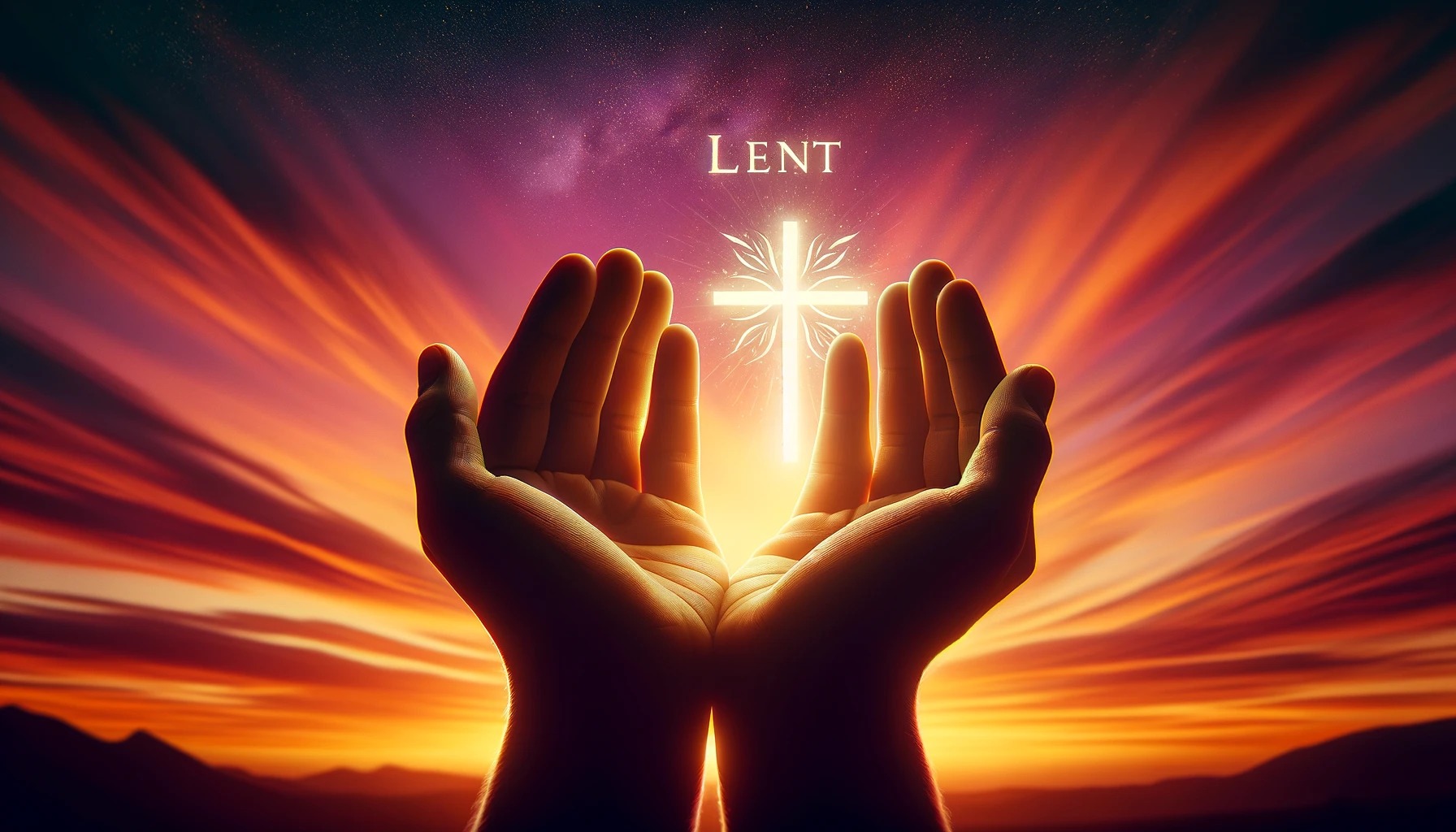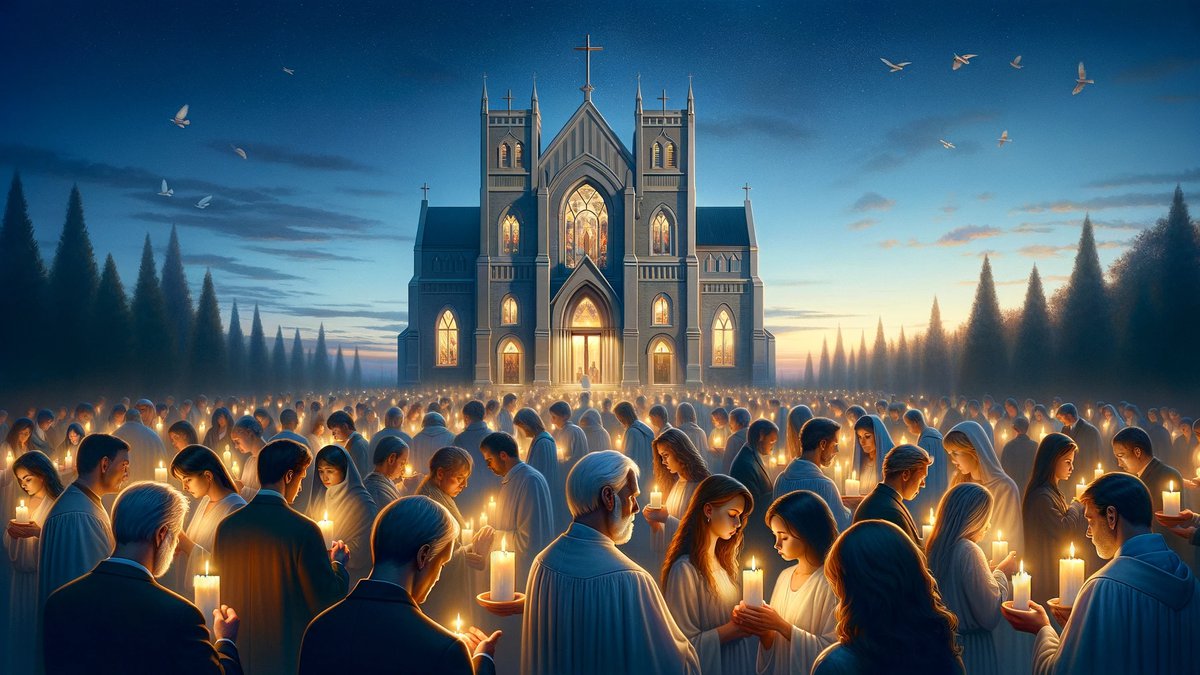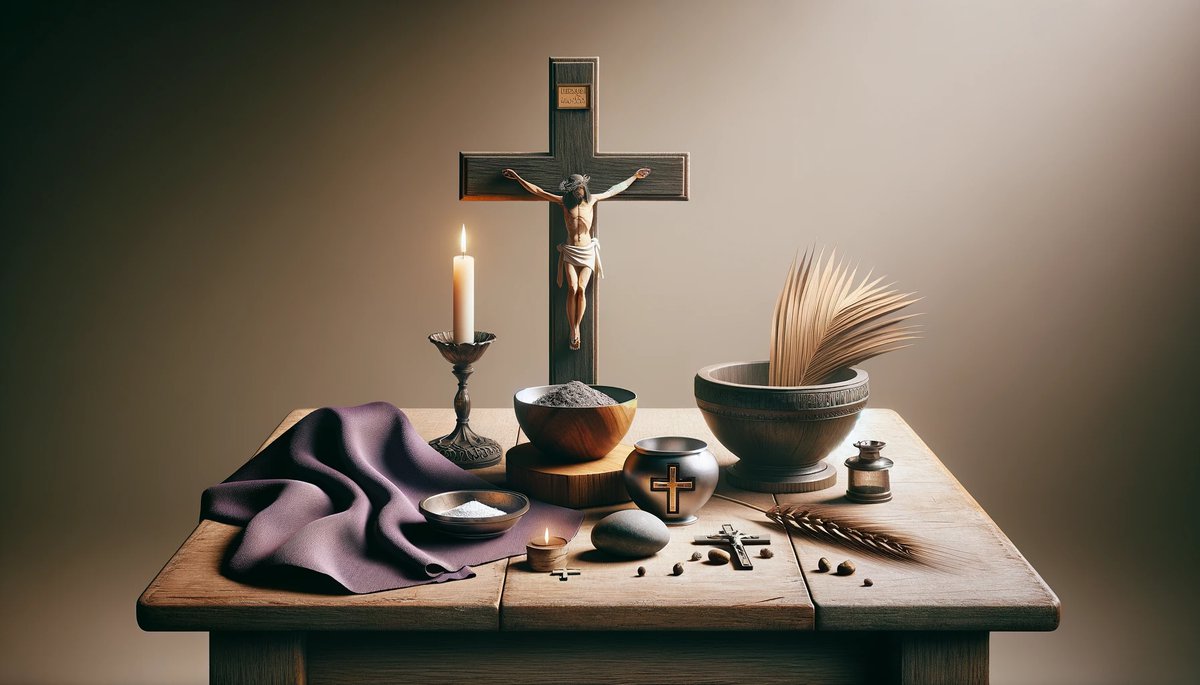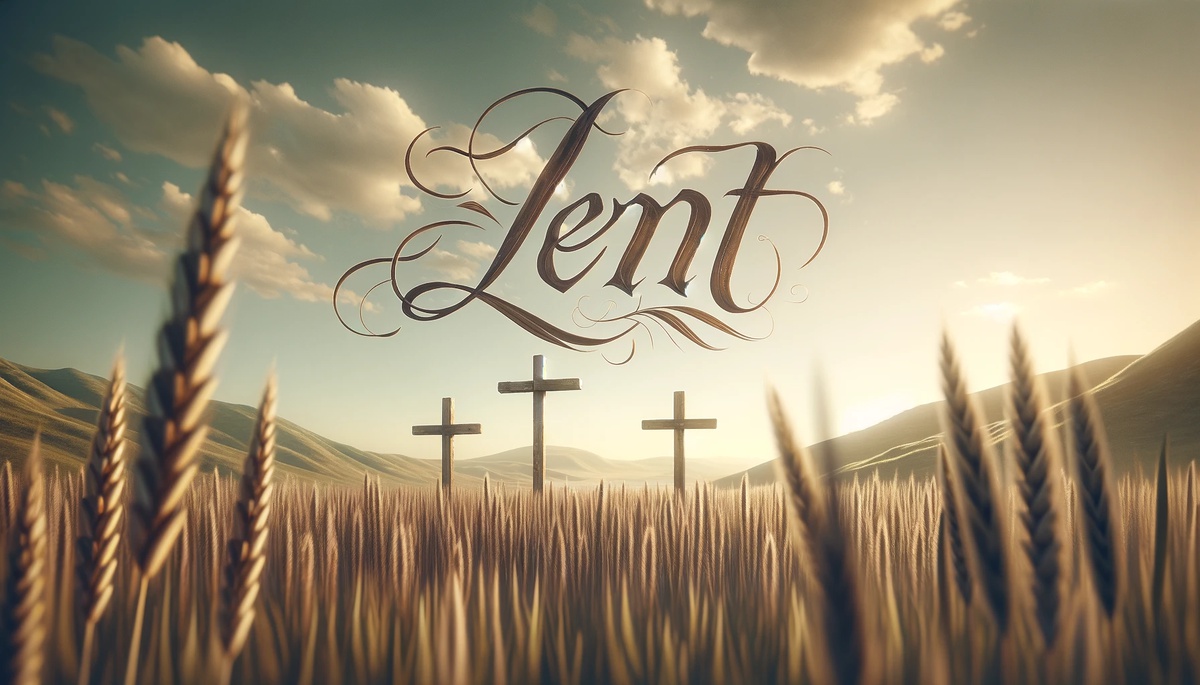Home>Special Themes>What Is Lent And Mardi Gras?


Special Themes
What Is Lent And Mardi Gras?
Published: February 27, 2024
Ericka Andersen, an editor at Christian.net, expertly merges digital strategy with content creation, focusing on faith and societal issues. Her communication skills enhance the platform's engaging narratives, fostering meaningful dialogue on belief's impact on society.
Learn about the significance of Lent and Mardi Gras in Christian tradition and their special themes. Explore the history and customs of these observances.
(Many of the links in this article redirect to a specific reviewed product. Your purchase of these products through affiliate links helps to generate commission for Christian.net, at no extra cost. Learn more)
Table of Contents
The Origins of Lent
Lent has its roots in the Christian tradition and is observed as a period of 40 days leading up to Easter. The word "Lent" itself comes from the Old English word "lencten," which means spring. The origins of Lent can be traced back to the early Christian church, where it was established as a time of fasting and reflection in preparation for the celebration of Easter. The 40-day period is symbolic of the 40 days that Jesus spent fasting in the desert, as recounted in the Gospels of Matthew, Mark, and Luke. This period of self-denial and spiritual discipline is seen as a way for Christians to emulate the sacrifices made by Jesus and to prepare themselves for the joyous celebration of his resurrection on Easter Sunday. Lent begins on Ash Wednesday and concludes on Holy Saturday, the day before Easter Sunday. During this time, Christians are encouraged to engage in acts of penance, prayer, and almsgiving as a means of spiritual growth and renewal.
Read more: How Does Mardi Gras Related To Lent
The Purpose of Lent
-
Spiritual Preparation: Lent serves as a period of spiritual preparation for the celebration of Easter. It is a time for Christians to reflect on their lives, repent for their sins, and renew their commitment to their faith.
-
Self-Denial and Sacrifice: The observance of Lent involves acts of self-denial and sacrifice, such as fasting, abstaining from certain foods, or giving up a particular habit or indulgence. These practices are intended to help individuals focus on their spiritual journey and develop a deeper sense of discipline and self-control.
-
Renewal and Transformation: Lent provides an opportunity for believers to seek renewal and transformation in their lives. Through prayer, meditation, and acts of charity, individuals strive to grow closer to God and experience a spiritual rebirth.
-
Identification with Christ's Suffering: The 40-day period of Lent is a time for Christians to identify with the suffering and sacrifice of Jesus Christ. By embracing self-discipline and enduring hardships, believers aim to connect with the journey of Jesus leading up to his crucifixion and resurrection.
-
Preparation for Baptism and Confirmation: In some Christian traditions, Lent is a time when catechumens (those preparing for baptism) and candidates for confirmation undergo a period of intense spiritual preparation and instruction before receiving these sacraments during the Easter Vigil.
-
Community and Solidarity: Lent also fosters a sense of community and solidarity among believers as they engage in collective acts of worship, fasting, and charitable works. It is a time for individuals to come together in prayer and support one another on their spiritual paths.
Overall, the purpose of Lent is to encourage spiritual growth, self-reflection, and a deeper connection with God, ultimately leading to a renewed and strengthened faith as Christians prepare to celebrate the resurrection of Jesus Christ on Easter Sunday.
Traditions and Practices During Lent
-
Fasting and Abstinence: One of the central traditions of Lent is fasting, which typically involves abstaining from certain foods or meals. In many Christian traditions, Ash Wednesday and Good Friday are designated as days of fasting and abstinence, during which believers refrain from consuming meat and limit their food intake. Some individuals may choose to fast from a particular food or beverage throughout the entire Lenten period as a form of self-discipline and spiritual devotion.
-
Prayer and Meditation: Lent is a time for intensified prayer and meditation, as believers seek to deepen their spiritual connection with God. Many churches offer special Lenten services, such as Stations of the Cross, Lenten retreats, and additional opportunities for communal prayer. Individuals may also set aside time for personal prayer, reflection, and meditation, focusing on themes of repentance, forgiveness, and gratitude.
-
Almsgiving and Acts of Charity: Acts of charity and generosity are emphasized during Lent as a way to express compassion and solidarity with those in need. Many Christians engage in almsgiving, donating to charitable organizations, volunteering in their communities, or participating in outreach programs that support the less fortunate. The practice of almsgiving is seen as a tangible expression of love and compassion, reflecting the selfless nature of Christ's sacrifice.
-
Lenten Devotions and Study: Some individuals choose to engage in specific devotional practices or spiritual disciplines during Lent, such as reading daily Lenten reflections, studying the Scriptures, or participating in Lenten study groups. These activities are designed to foster spiritual growth, deepen understanding of the Christian faith, and provide opportunities for introspection and personal growth.
-
Liturgy and Worship: Churches often incorporate special liturgical elements and worship services during the Lenten season. This may include the use of purple vestments and paraments, the omission of the Gloria in excelsis Deo, and the alteration of hymn selections to reflect the penitential nature of the season. The observance of Lenten liturgy and worship serves to create a solemn and reflective atmosphere, guiding believers through the journey of repentance and renewal.
-
Lenten Disciplines and Practices: In addition to the traditional practices of fasting, prayer, and almsgiving, individuals may choose to adopt specific Lenten disciplines tailored to their spiritual needs. This could involve committing to acts of self-denial, engaging in works of mercy, or focusing on areas of personal growth and transformation. The diversity of Lenten disciplines allows individuals to approach the season with intentionality and purpose, seeking to cultivate a deeper relationship with God and a more profound sense of spiritual fulfillment.
Overall, the traditions and practices observed during Lent are intended to create a space for spiritual introspection, self-discipline, and communal solidarity, guiding believers on a transformative journey toward Easter.
The History of Mardi Gras
-
Medieval Origins: The history of Mardi Gras can be traced back to medieval Europe, where it originated as a Christian festival with roots in the ancient Roman pagan celebrations of Saturnalia and Lupercalia. The term "Mardi Gras" is French for "Fat Tuesday," referring to the practice of indulging in rich foods and revelry before the solemn observance of Lent. In medieval Europe, the period leading up to Lent was marked by feasting, masquerade balls, and processions, as people sought to engage in merrymaking before the onset of the Lenten season.
-
Introduction to the Americas: Mardi Gras was brought to the Americas by French explorers, particularly those who settled in the region that would later become New Orleans, Louisiana. The first recorded Mardi Gras celebration in North America took place in the late 17th century, and the tradition continued to evolve as various cultural influences, including those of Spanish, African, and Native American origin, contributed to the vibrant tapestry of Mardi Gras festivities.
-
Evolution in New Orleans: New Orleans became synonymous with Mardi Gras, hosting elaborate parades, masked balls, and street revelry that attracted visitors from around the world. The city's diverse cultural heritage, including French, Spanish, African, and Caribbean influences, infused Mardi Gras with a unique blend of music, dance, and pageantry. The formation of "krewes," social organizations responsible for organizing Mardi Gras events, added a structured and ceremonial element to the celebrations, with each krewe contributing its own themed parade and lavish costumes.
-
Symbolism and Tradition: Mardi Gras became a symbol of community, creativity, and resilience, embodying the spirit of joy and camaraderie. The colors of Mardi Gras—purple, green, and gold—came to represent justice, faith, and power, respectively, and were prominently featured in the decorations and attire associated with the festivities. The tradition of throwing beads, trinkets, and doubloons from parade floats to onlookers became a hallmark of Mardi Gras, fostering a sense of shared revelry and abundance.
-
Cultural Significance: Over time, Mardi Gras evolved into a cultural phenomenon that transcended its religious origins, embracing a spirit of inclusivity and artistic expression. The celebration of Mardi Gras served as a testament to the resilience and vitality of the human spirit, offering a moment of collective jubilation and creative exuberance. Today, Mardi Gras continues to be celebrated in various forms across the United States and around the world, each manifestation reflecting the unique cultural dynamics and traditions of the communities that embrace it.
-
Resilience and Adaptation: Despite challenges such as wars, economic hardships, and natural disasters, the spirit of Mardi Gras has endured, serving as a source of hope and renewal for communities. The resilience of Mardi Gras underscores its capacity to unite people in celebration, fostering a sense of belonging and cultural pride. As a testament to the enduring legacy of Mardi Gras, the traditions and pageantry associated with the festival continue to captivate and inspire individuals of all backgrounds, perpetuating a rich tapestry of cultural heritage and artistic expression.
The Meaning of Mardi Gras
Mardi Gras holds deep cultural and symbolic significance, embodying a spirit of revelry, community, and creative expression. At its core, Mardi Gras represents a time of celebration and indulgence before the solemn period of Lent. It serves as a joyful and vibrant prelude to the introspective and penitential observance of Ash Wednesday and the Lenten season. The festivities of Mardi Gras are infused with a sense of camaraderie, as people come together to partake in parades, masquerade balls, and street revelry, fostering a spirit of unity and shared jubilation. The colorful pageantry, elaborate costumes, and exuberant music and dance reflect the diversity and vitality of the communities that embrace Mardi Gras, showcasing a rich tapestry of cultural heritage and artistic expression. Moreover, Mardi Gras serves as a testament to the resilience and adaptability of communities, transcending its religious origins to become a symbol of inclusivity, creativity, and the enduring spirit of human celebration.
Read more: What Is The Significance Of Lent?
Mardi Gras Celebrations Around the World
-
New Orleans, Louisiana, USA: New Orleans is renowned for hosting one of the most extravagant and iconic Mardi Gras celebrations in the world. The city's vibrant parades, elaborate floats, and lively street parties attract visitors from far and wide. The diverse cultural influences of New Orleans infuse the Mardi Gras festivities with a unique blend of music, dance, and culinary delights, creating an unforgettable experience for all who partake in the revelry.
-
Rio de Janeiro, Brazil: In Rio de Janeiro, Mardi Gras is celebrated with the world-famous Carnival, a spectacular event known for its samba parades, colorful costumes, and electrifying music. The city comes alive with a whirlwind of festivities, as samba schools compete in a dazzling display of dance and pageantry, drawing millions of spectators to join in the exuberant celebrations.
-
Venice, Italy: Venice's Mardi Gras, or Carnevale, is steeped in history and tradition, dating back to the 12th century. The city's opulent masquerade balls, intricate masks, and enchanting canal-side processions evoke a sense of timeless elegance and mystique, transporting revelers to a bygone era of Venetian splendor and romance.
-
Barranquilla, Colombia: The Carnival of Barranquilla is a vibrant and colorful celebration that showcases the rich cultural heritage of Colombia. The festivities feature lively parades, traditional folk dances, and elaborate costumes, reflecting the diverse influences of Afro-Colombian, indigenous, and Spanish traditions that converge in a jubilant display of music and dance.
-
Nice, France: The Mardi Gras celebrations in Nice, known as the Nice Carnival, are characterized by elaborate floats, flower battles, and dazzling nighttime parades. The city's Mediterranean charm provides a picturesque backdrop for the festivities, as locals and visitors alike revel in the enchanting spectacle of artistic creativity and joie de vivre.
-
Trinidad and Tobago: The Carnival of Trinidad and Tobago is a dynamic fusion of African, Indian, and European cultural influences, culminating in a vibrant display of music, dance, and revelry. The pulsating rhythms of calypso and soca music set the stage for exuberant street parades and elaborate costumes, creating an electrifying atmosphere of celebration and unity.
-
Sydney, Australia: Sydney's Gay and Lesbian Mardi Gras is a jubilant celebration of diversity, equality, and inclusion, attracting participants from across the globe. The event features a dazzling parade, vibrant performances, and a spirit of empowerment and solidarity, serving as a powerful affirmation of love, acceptance, and the ongoing pursuit of social justice.
-
Goa, India: In Goa, Mardi Gras is celebrated as the Carnival of Goa, a lively and colorful festival that reflects the state's Portuguese heritage. The festivities include vibrant processions, street dances, and the tradition of smearing colorful powders and water, creating a joyous and festive atmosphere that unites people of all backgrounds in a spirit of camaraderie and merrymaking.
Mardi Gras celebrations around the world showcase the diversity and richness of cultural traditions, uniting communities in a shared expression of joy, creativity, and collective revelry. Each location infuses its own unique customs and influences, contributing to the global tapestry of Mardi Gras festivities that continue to captivate and inspire people of all ages and backgrounds.














